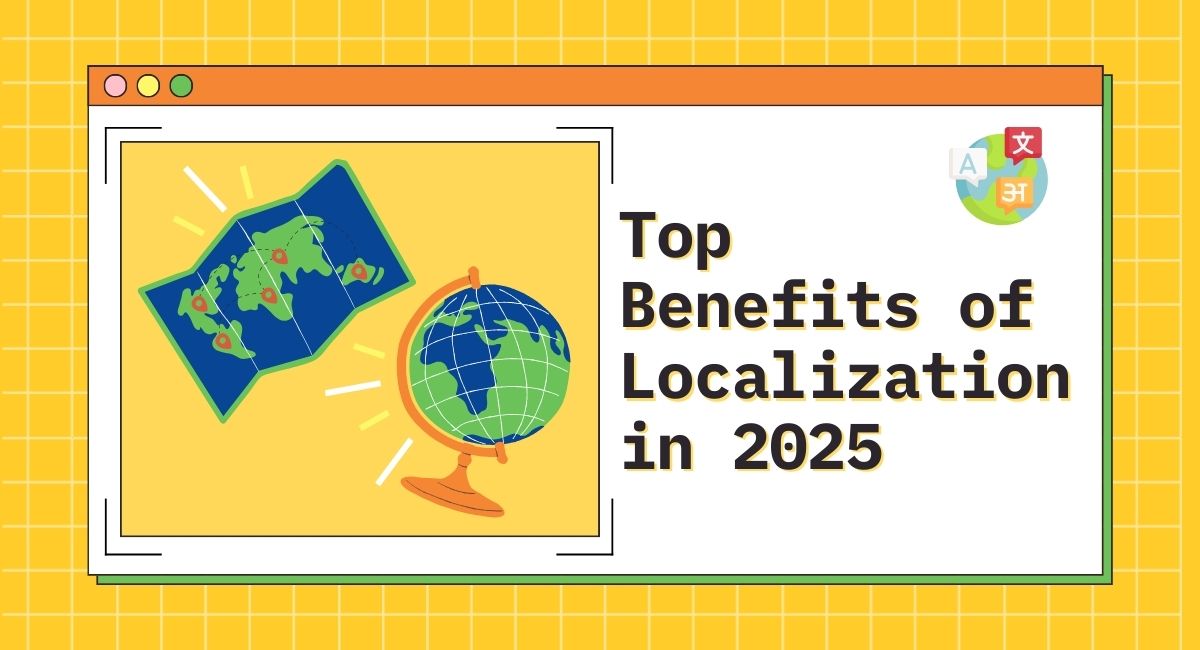Today’s interconnected world makes it impossible to follow a “one-size-fits-all” approach. Localization plays a crucial role in ensuring that products, services, and content reflect customers’ languages, cultures, and values.
Brands feel truly native in every market they enter by adapting everything from messaging to design to payment methods and user experience through localization. Through 2025, localization will be a key factor driving global growth, helping companies establish trust, reach a broader audience, and remain competitive.
Contents
1. Enhanced User Experience
Localization ensures products, websites, and apps feel natural to each market. Customers are more likely to engage when content is available in their own language and reflects their preferences.
- Why it matters: 74% of customers will switch brands if buying is difficult, and 32% leave after a single bad experience.
- Example: Netflix localizes by offering region-specific languages, subtitles, and content recommendations, keeping global users highly engaged.
2. Increased Accessibility
A strong localization strategy makes products inclusive and accessible to a wider audience, including people with disabilities or language barriers.
- How it helps: Adding features like captions, translated text, and alt tags improves usability.
- Example: Google Maps delivers directions in dozens of languages, making navigation seamless for travelers and locals worldwide.
3. Stronger Global Brand Recognition
Adapting brand messaging to local cultures builds trust and boosts visibility. Localization makes global companies feel local everywhere they operate.
- Data point: Top global websites now support an average of 54 languages (Web Globalization Report Card).
- Example: Nivea tailors campaigns and packaging for each market, from Arabic to French, ensuring every customer feels the brand was made for them.
💡 Fact Box
Over 72% of consumers prefer browsing websites in their native language, proving that localization is essential for global success.
4. Cultural Relevance and Connection
Localization is about more than words—it’s about embracing cultural nuances. Brands that respect local customs build deeper emotional bonds.
- Example: Airbnb adjusts listings, payment methods, and customer support to fit cultural and regulatory differences in each region. This inclusivity drives trust and long-term loyalty.
5. Faster Market Expansion
By localizing products and services, businesses can smoothly enter new markets and gain a competitive edge.
- Example: Starbucks tailored its Chinese stores and menus to reflect local tastes and traditions, which played a key role in its rapid expansion across the country.
6. Improved Customer Loyalty
Localization shows commitment to customers by meeting them on their own terms. This builds stronger relationships and repeat business.
- Example: Amazon provides multilingual customer support, ensuring buyers receive help in their preferred language. This personalized service strengthens trust and loyalty.
In summary
Localization isn’t just translation—it’s a growth strategy. It improves customer experience, breaks barriers, builds trust, and accelerates global success. In 2025, companies that embrace localization will be best positioned to thrive in diverse international markets.
Rohit Kumar is a tech enthusiast and blogger who shares practical tips, insights, and reviews on AI, digital tools, and the latest technology trends.





